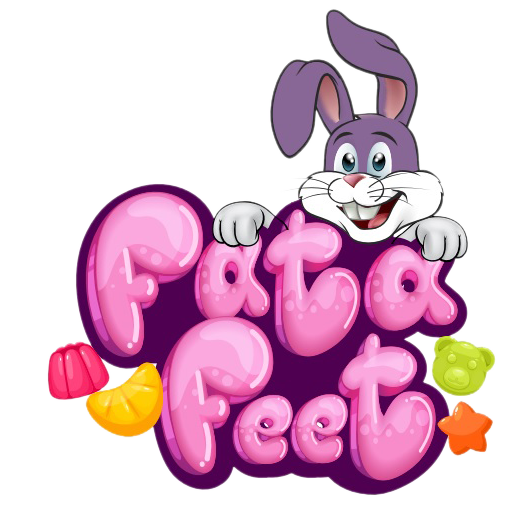.jpg)
Solution-Focused Therapy was developed in the 1980s by Steve de Shazer, Insoo Kim Berg, and their colleagues at the Brief Family Therapy Center in Milwaukee, Wisconsin. They were dissatisfied with traditional therapeutic approaches that heavily focused on analyzing problems and searching for their causes. Instead, they wanted to explore what was working well in clients’ lives and utilize those strengths to create positive change. Therapists ask clients to imagine a scenario where a miracle has occurred overnight, and their problem has disappeared.
- Solution-Focused Therapy (SFT), or Solution-Focused Brief Therapy (SFBT), was developed in the late 1970s by Steve de Shazer, Insoo Kim Berg, and colleagues.
- Following your conversation, we’ll pair you with the therapist who best aligns with your needs, goals, and preferences.
- Solution-focused behavioral activities provide clients with an opportunity to explore their own resources and strengths, as well as identify changes that they would like to work towards in their life.
- However, some commonly used ones include the Miracle Question, goal setting, exception finding, scaling questions, etc.
- John reported that he drinks alcohol infrequently, drinking two to three drinks per month.
- Exercise caution when working with individuals who have experienced severe trauma.
Solution-focused practice toolkit
They can also rate their confidence in their ability to solve problems or achieve goals. This exercise provides a clear and measurable way to track progress and discuss steps toward improvement. Since the divorce, John has been struggling with hopelessness, lowered self-esteem, and difficulty coping. He has experienced functional impairment at work, more specifically poor concentration and motivation. Even with his current level of distress, he can maintain his daily routine, including a balanced diet and healthy exercise routine. He has no history of mental health disorders, and is not taking any medications.
.jpg)
How does Solution-Focused Therapy focus on the future?
The article offers a comprehensive overview of Solution-Focused Brief Therapy (SFBT), covering its core principles, primary therapeutic techniques, and its application to various psychological issues. It also discusses the criticisms, limitations, and effectiveness of SFBT in fostering positive change, enhancing client strengths, and achieving therapeutic goals in a brief time frame. Therapists who specialise in working with young clients can employ age-appropriate language, activities, and techniques to engage children and adolescents in the therapeutic process. Solution-Focused Therapy’s focus on strengths and solutions can be particularly beneficial for younger individuals. Throughout this article, we have explored the core techniques employed in Solution-Focused Therapy, such as the Miracle Question, Scaling Questions, and Goal Setting. These techniques, along with others, provide individuals with practical strategies to navigate challenges, discover their potential, and achieve their desired outcomes.
John denied a history of mental health concerns, and has not engaged in mental health treatment before. He explained that his wife suggested that he speak to someone after he told her about the difficulties he was experiencing. John reported that he drinks alcohol infrequently, drinking two to three drinks per month. Overall, John indicated that he is in good health and has a healthy support network of his family and friends.
The “Solution-focused Practice – A Toolkit for Children & Young People” is a practical guide developed by NSPCC for professionals who work with children and young people between the ages of 5 and 19. The toolkit is particularly useful for practitioners who have some background in solution-focused practice and are in search of additional resources. John reported being motivated for treatment, and was willing to engage in weekly individual therapy sessions at this time. The presenting section of your treatment plan gives you an opportunity to include your case conceptualization for the case. The information included in this summary should support the goals and interventions later used in your treatment plan.
Step 3: Use the completed worksheet to develop a treatment plan
- If you are struggling with your emotions and want help, the best time to call a therapist is now.
- Carry with you the message that within you lies the power to craft the future you desire, one solution at a time.
- If you are interested in learning more about the flexible and empowering mental health treatment approach, we encourage you to explore available training education opportunities in your respective field.
- Solution-focused brief therapy can be applied effectively to a range of mental health concerns (Seligman, Reichenberg, 2010).
- The “Solution-focused Practice – A Toolkit for Children & Young People” is a practical guide developed by NSPCC for professionals who work with children and young people between the ages of 5 and 19.
- During this process, clients are able to explore positive commitments to change.
Solution-Focused Therapy can be beneficial for individuals of all ages and backgrounds. It is a flexible approach that can be adapted to various therapeutic settings and client needs. However, it may not be the most suitable choice for individuals requiring long-term or in-depth exploration of underlying issues. It’s best practice for the coach to only ask the miracle question once in a coaching session. In the solution-focused coaching model, the miracle question is typically asked at the beginning of the coaching session after building rapport.
Counter Finding
Having a fully stocked Mental Health Toolbox is essential if visiting a mental health professional is out of financial reach as it is for many patients. This technique is focused on helping people get more goal-oriented by creating a mind map. They are asked to have a miracle at the center and then find ways to make the miracle happen in real life. There are many kinds of asking questions techniques, like miracle questions, exception questions, etc. Practitioners ask questions to help the young person begin moving towards the future they want and help them make positive changes in their lives. Your professional opinion and experience should guide you in deciding whether to distribute our Solution-Focused Therapy Worksheet to your patients.
Types of Solution-Focused Brief Therapy Techniques
Humanistic therapists encourage clients to connect with their inner resources and emotional depth, fostering long-term growth, whereas SFBT is more concerned with pragmatic, short-term solutions. The brevity and focus of SFBT make it accessible and adaptable to various contexts, including individual therapy, couples therapy, and family therapy. It is effective for clients seeking to address specific issues, set goals, and create actionable plans. Yes, Solution-Focused Therapy can be effectively applied to couples therapy and family therapy. Yes, Solution-Focused Therapy can be integrated with other therapeutic approaches to create a tailored treatment plan. Therapists often combine Solution-Focused Therapy with techniques from cognitive-behavioural therapy (CBT), mindfulness, and other modalities to meet the specific needs of their clients.
By regularly engaging in this exercise, you can track progress over time, celebrate your achievements, and identify areas where you wish to develop further. Incorporating solution mind mapping into the Miracle Question Exercise can further enhance its effectiveness. By placing the miracle at the center of the map and branching out solutions, you create a visual brainstorming tool that can unlock new perspectives and inspire creative problem solving. It’s an exercise that not only provides clarity but also empowers you to transform your vision into tangible outcomes. It’s full of failures, discouragements, and hard times which can make that miracle future seem even farther away. But that’s okay, it’s actually a crucial part of the process that we all have to go through.
This specific worksheet is intended for patients to complete outside of session times, solution focused therapy activities ensuring that responses are authentic and patients have a role in developing their treatment goals. Many clients will appreciate it when you encourage such engagement, enabling a more direct therapy treatment method and ensuring that patients continuously work toward positive outcomes. The printable worksheet is accessible to clients of various ages and backgrounds.



